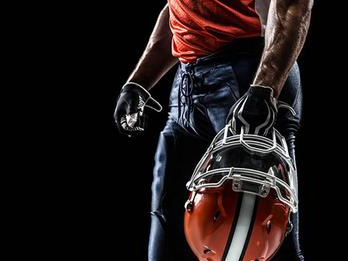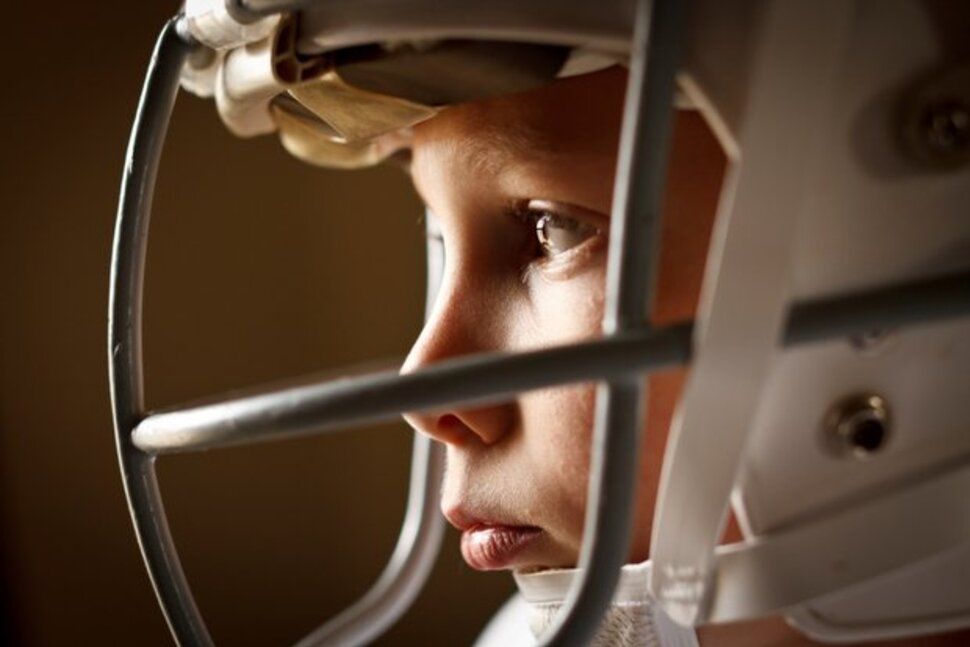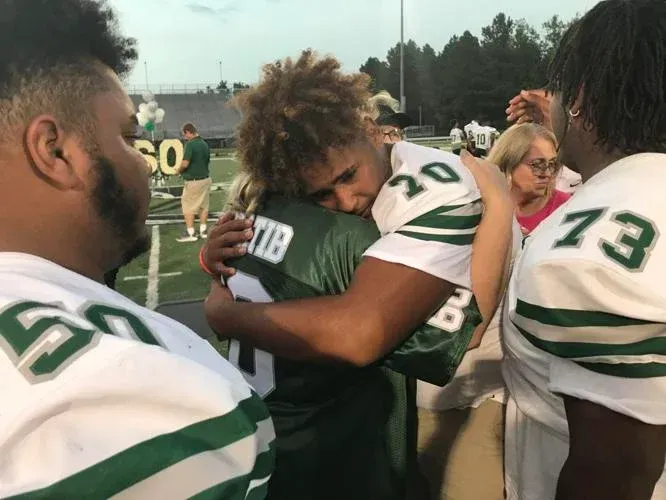By Published by Sportdecals
•
September 3, 2021
We all know why it’s crucial to put on our football helmets before hitting the field. Without them, players run a much higher risk of head serious injuries, concussions—or worse. However, have you ever stopped to think about what’s really behind this fundamental piece of athletic wear? If you’re like most people, the answer is probably no. Instead, you grab that helmet, throw it on your head, and trust it’ll thoroughly protect that precious noggin. But, now that you’re thinking about it, aren’t you getting a little bit curious? Believe it or not, well over a century of safety, highly-technical innovations lie under that hard, plastic shell with each adjustment made to enhance the wearer’s protection. Let’s find out what a football helmet is made of, what technology is used to enhance protection and how the helmet has evolved into the safety device it is today. A Brief History of Football Helmets Before we get into the nitty-gritty behind what makes up a modern football helmet, it’s essential to understand how they evolved into today’s protective gear. The first intercollegiate football game was played in 1869 , but surprisingly, the first helmets weren’t introduced until almost thirty years later. It was in the late 1890s that players began experimenting with different kinds of headgear in an attempt to curb the high injury rate during games. These early caps look much different than the hard, plastic helmets we see today. Instead, they were made of leather straps, padding and ear flaps. They also offered little ventilation and made hearing their teammates difficult. Still, preferring protection to comfort, most players quickly embraced the helmet. Soon, people began to innovate on the initial design by creating more breathable and more protective helmets. Innovation also took shape in another form. In 1948, Fred Gehrke, a halfback Los Angeles Rams painted those iconic horns on his team’s helmet. It was the first time a football helmet displayed a team-related design. As the 20th century marched on, plastic helmets were introduced. By the mid-1960s, they had completely replaced the leather variety. The Modern Football Helmet On the surface, those early plastic football helmets more or less resemble the ones we see today. However, the technology underneath the surface has evolved immensely. Also, as more studies on the consequences of concussions are released, manufacturers are increasingly dedicated to designing the safest helmet possible. From quick release face masks to impact protection from every angle, helmets are continuously making football safer each year. Today, anyone playing on an organized, contact football team must wear a helmet certified by the National Operating Committee on Standards for Athletic Equipment (NOCSAE). The NOCSAE puts every helmet through rigorous tests which pushes the headgear to its limit. If it fails any test, certification is denied. Still, even the best helmet can’t eliminate every chance of head injury. Football is very much a contact sport and therefore, inherently risky. However, as long as you’re choosing an approved helmet from a top-notch manufacturer, your head is better protected today than it’s ever been in football history. The Anatomy of a Football Helmet Ever since plastic officially replaced leather, the basic anatomy of a modern football helmet has generally remained the same. Today, helmets consist of a hard shell, several inner layers of padding, a face mask and chinstrap. However, different position’s helmet will be modified based on their particular needs. Some players also add onto their helmet for things like extra protection, increased communication and weather resistance. No matter how it appears, the principles behind designing a safe helmet remain the same—they’re made to absorb the energy of an impact and minimize the chance of head injuries. Here’s a quick breakdown of what makes a football helmet, and how it protects football players: Outer Shell The thin, hard outer shell is the part of the gear we most often see. The exterior is usually made of a molded polycarbonate that measures around 3.35mm. Polycarbonate is an ideal material because it’s lightweight, yet can also protect the head from the brunt of a massive impact. However, times might be changing. Though the far majority of helmets still use hard plastic, some companies are experimenting with a slightly softer top layer as a means to boost energy absorption. Inner Absorption Layers Though some companies might use slightly different padding and materials, the most common include polyurethane or nitrile foams. Lightweight, durable and elastic, these foams withstand immense amounts of force while still keeping their shape. New technologies are also allowing for new safety innovations. These include additions like air pockets, shock absorbers, new material combinations and more. Face Masks The face mask was a relatively new addition to the football helmet. Initially, the face mask only consisted of a single bar made of metal, plastic, or in the earliest days, leather. As safety measures improved, more bars and even plastic visors were added. By 2004, the National Football League required all new players to use the safer multibar variety. Today, most facemasks are made from metals including carbon steel, titanium or stainless steel. Visors Helmet visors are one of the newest additions to football protective gear. They were first seen in the mid-1980s as a way to block out the sun or battle other weather elements. Interestingly though, even these simple, plastic add-ons aren’t immune to controversy. Initially, visors could be tinted, darkened or colored. However, coaches expressed worry that potential head injuries or concussions could go unnoticed underneath. In response, youth leagues, the NCAA and the NFL have banned everything but clear visors unless the player has special permission. Source: Sportdecals.com






